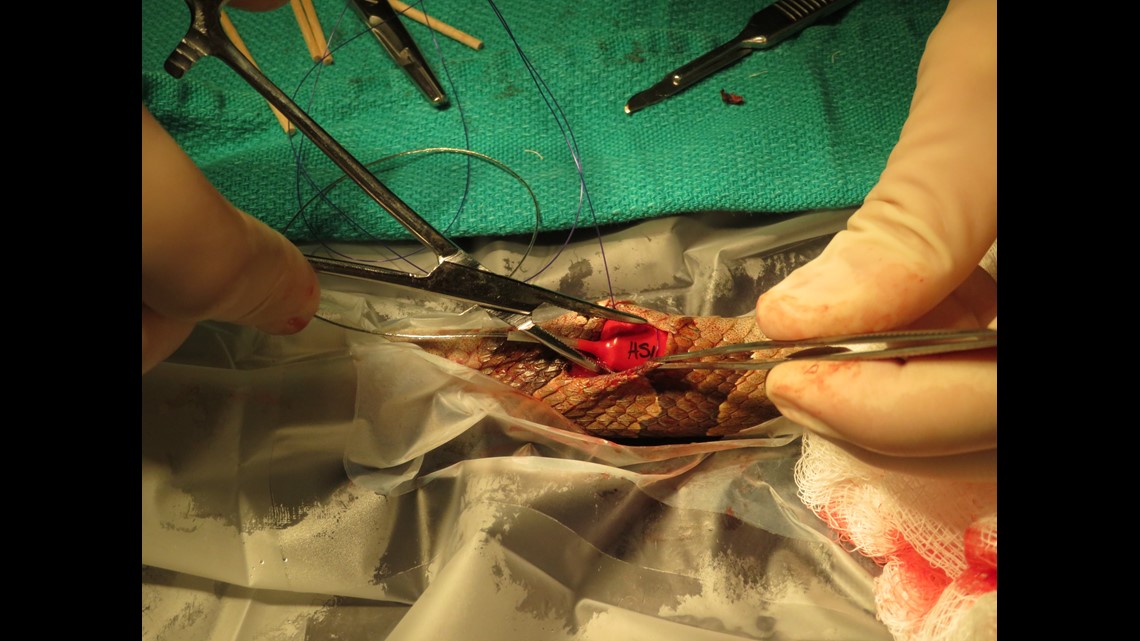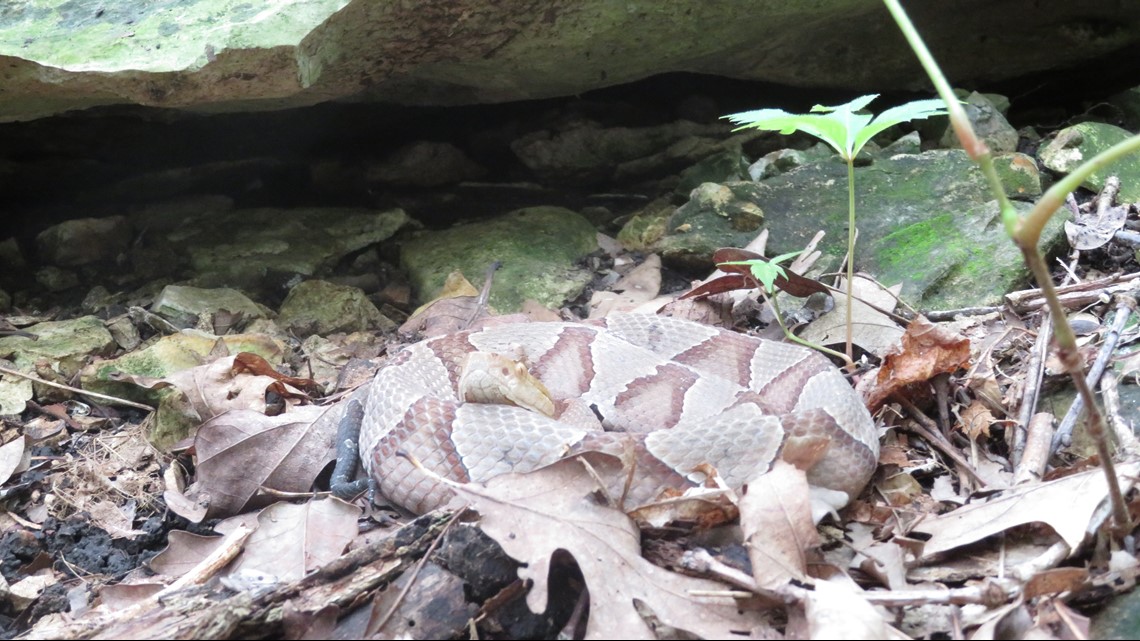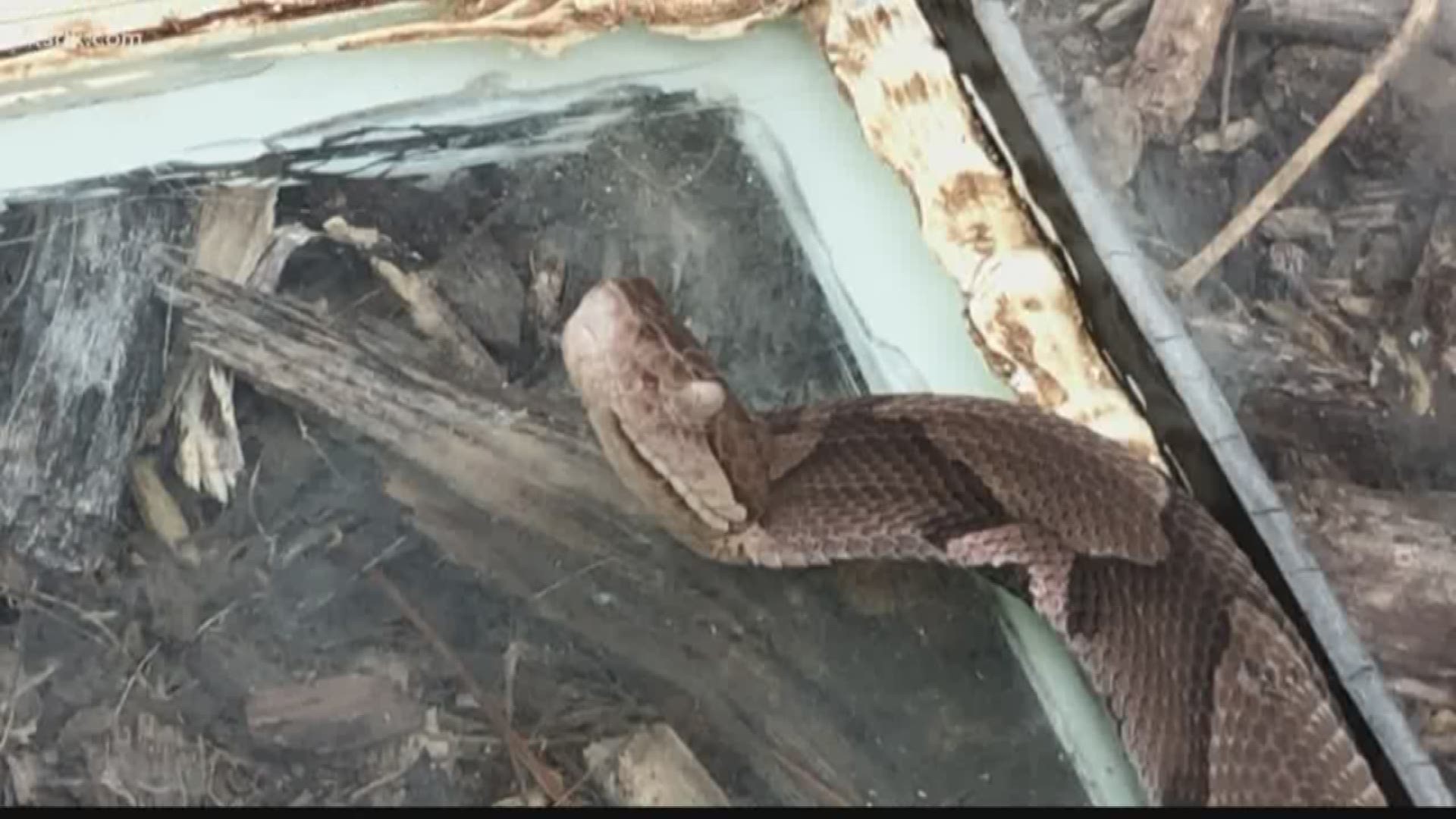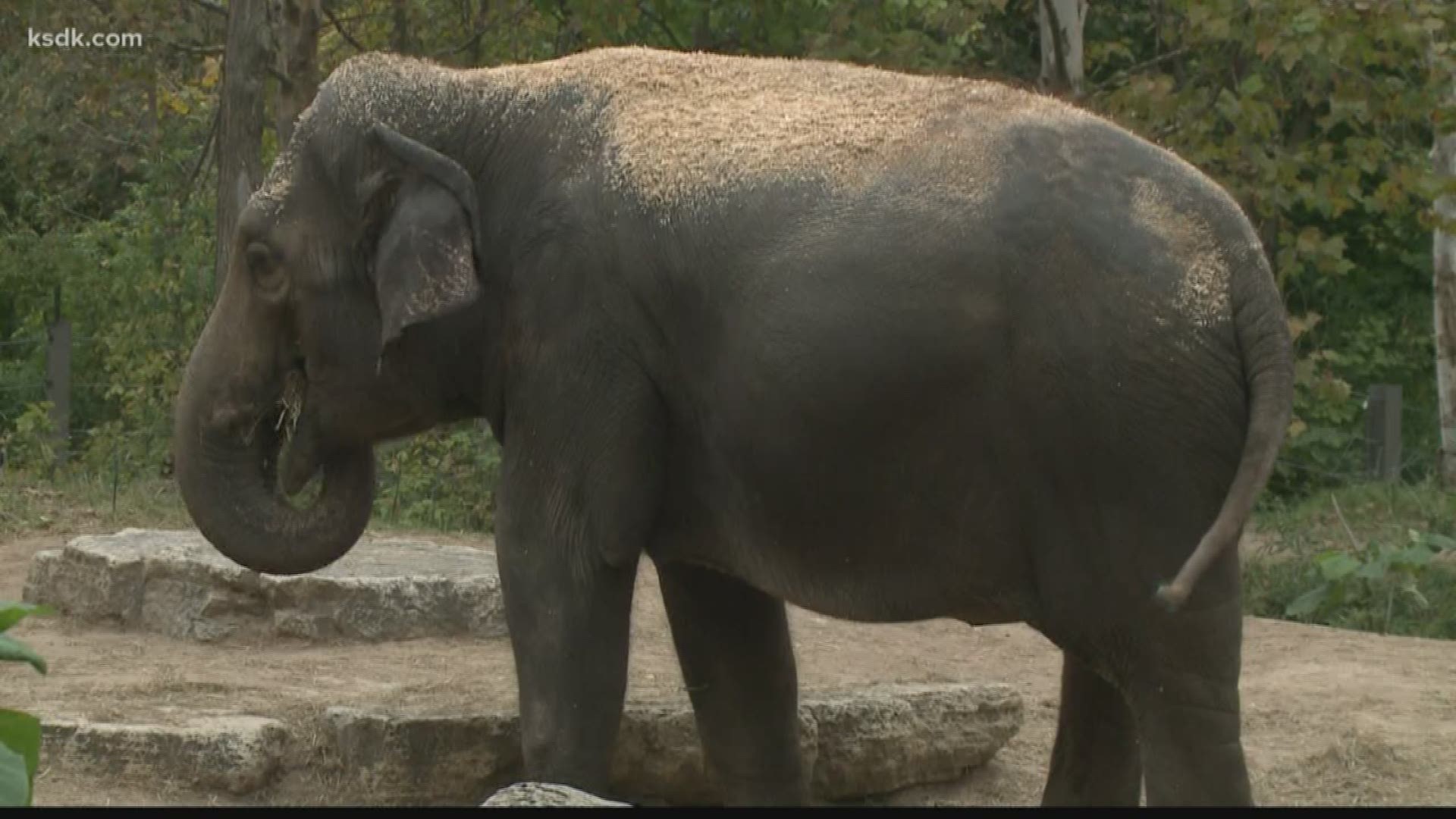KIRKWOOD, Mo. — Tucked in between I-270 and I-44 lies over a hundred acres of oak-hickory forest. The Powder Valley Conservation Nature Center is about as close to the wild and as close to a major metropolitan area as any researcher can get.
It's there in Kirkwood where Dr. Benjamin Jellen is part of a study to better understand the patterns of venomous copperhead snakes.
"Powder Valley has 100-plus-thousand visitors a year and they are out around venomous snakes," Jellen explained.
By tracking the pit vipers, Jellen hopes to minimize negative people-snake interactions and figure out where the suburban snakes are most likely to be.
"Nobody knows what makes a good burrow a good burrow for a snake," Jellen said. "There will be a hole in the ground here and a hole in the ground next to it. And why do they pick one and not the other."
Those are the just some of the questions the project funded by the Missouri Department of Conservation aims to answer.
With the help of St. Louis Zoo veterinarians, Jellen is able to fit the snakes he finds with radiofrequency tracking devices.


Once released back to where he found them, Jellen and his students are able to follow the snakes' movements around Powder Valley.
Every time Jellen locates one of the snakes he records the location, weather condition and approximate body temperature of the reptile.
So far Jellen has found that the snakes tend to gravitate towards areas they are familiar with.
"A lot of times, they are relatively close to the trail," Jellen said. "They move quite a bit throughout the park. Sometimes they will be four or five feet away from the trail underneath a log and I think a lot of times people pass by and have no idea that they are there."




